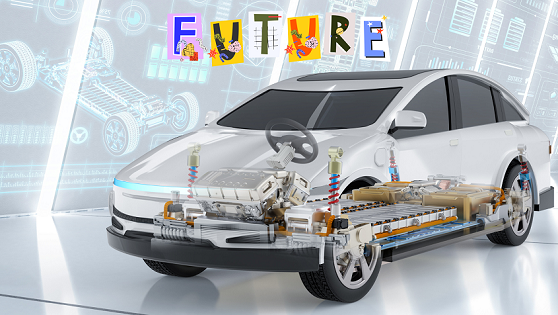
Moving towards a cleaner and more sustainable future, the automotive industry is brighter than ever when it comes to electric vehicles (EVs). Looking ahead to 2025, there are several main trends we expect to drive the space of electric vehicles, from the evolution of battery technology to the explosion of autonomous driving features. If you’re wondering what’s becoming of the EV world, here’s a closer look at what top trends to watch for in the coming years.
Here are some of the key trends shaping the future of electric vehicles (EVs) that we can expect to see in the next few years.
1. Advancements in Battery Technology: Longer Life, Faster Charging
The biggest problem with electric vehicles today is battery life and charging speed. But the future of EVs looks brighter in both of these areas, with ongoing research and development.
By 2025, we can expect:
- Solid-state batteries: These are safer, more energy dense than lithium-ion batteries, which are expected to become more mainstream. By offering driving range increases and reducing charging time, to the point where a full charge could be achieved in less than 30 minutes, solid-state batteries will also address the issue of range anxiety.
- Improved energy density: The manufacturers of batteries are concentrating on enhancing energy density that will allow EVs to go further on a single charge. Projections are that by 2025, mainstream EVs will be able to drive more than 500 miles per charge.
- Cost reductions: As production volumes increase and technology continues to improve, the cost of EV batteries will continue to fall, thus reducing the cost of electric vehicles and making them more accessible to a wider range of consumers.
2. Fast-charging networks are widely adopted
One of the biggest roadblocks to EV adoption has been charging infrastructure, but things are changing quickly. Ultra-fast charging stations will be a game changer by 2025.
- High-speed charging stations: But with the development of ultrafast chargers that can give 200-300 miles of range in 20 minutes, long road trips and daily commutes will become much more convenient for EV owners.
- EV charging everywhere: Governments, businesses, and other entities will invest in building out public charging infrastructure that will become ubiquitous, including fast charging stations along highways, in urban areas, and at key locations such as shopping centers, parking lots, and office buildings.
- Wireless charging: Wireless or inductive charging technologies, which allow EVs to charge without plugging in, could become a reality as soon as 2025, some experts predict.
3. The Rise of Autonomous EVs
The technology of autonomous driving is developing very quickly, and by 2025, fully autonomous electric vehicles can cease to be a distant dream.
- Self-driving capabilities: As AI and machine learning advance, more EVs will come with Level 3 or Level 4 autonomy, which means they can take care of most of the driving with little to no human intervention. In some regions, self-driving EVs may be in operation in urban environments or in specific geographic areas by 2025.
- Increased safety: Advanced driver assistance systems (ADAS) such as automatic braking, lane keeping assist, and collision avoidance are expected to boost safety in autonomous EVs. This technology will be an important factor in diminishing traffic accidents and fatalities.
- EV fleets and ride-sharing: New autonomous electric vehicles are poised to disrupt the traditional car ownership model. Electric autonomous fleets are likely to be adopted by ride-sharing services such as Uber, Lyft, and other mobility companies as a more sustainable and efficient alternative to individual car ownership.
4. EVs in the Commercial Sector
Consumer electric vehicles have come a long way, but so will the commercial vehicle market by 2025.
- Electric trucks: Electric trucks for goods transportation are on the rise. Electric trucks are being pushed to market by companies like Tesla (with their Semi truck) and Rivian. Not only will these vehicles help lower emissions, but they will also help lower the operating costs of logistics companies.
- Electric delivery vans: More major companies like Amazon are now investing in electric delivery vans and will continue to do so. Electric refrigerator trucks and these vans will change the face of the logistics and distribution sector and push supply chain sustainability even further.
5. Renewable Integration
With electric vehicles on the rise, the integration of electric vehicles with renewable energy sources will become more important. More synergies between EVs and the power grid could become reality by 2025.
- Vehicle-to-grid (V2G) technology: EVs are able to draw power from the grid and send power back into it with this technology. With increasing EV adoption, V2G systems will help the grid balance and serve as additional storage for renewable energy sources such as wind and solar.
- Solar-powered EVs: Despite being in their infancy, some manufacturers are looking at integrating solar panels directly into EVs to provide extra power. The technology could extend the range of vehicles—especially in sunny regions—by 2025.
- Smart charging: Renewable energy could be used to charge EVs during periods of peak renewable energy generation, such as when solar or wind generation is highest. The smart charging capability will cut dependence on fossil fuels and reduce the carbon footprint of EVs.
6. Government Policies and Incentives Friendly to EVs
The electric vehicle market will continue to be a function of government policies. By 2025, expect to see:
- Stronger emissions regulations: emissions regulations are being tightened by many countries, and ambitious EV adoption goals are being set. For example, the European Union and several U.S. states have already set deadlines to phase out internal combustion engine vehicles in favor of EVs.
- EV purchase incentives: Tax credits, rebates, and subsidies will keep on being offered by governments to make EVs cheap. With lower battery costs and this financial support, consumer adoption will be even stronger.
- Carbon offset programs: In certain parts of the world, drivers of electric vehicles may qualify for carbon credits or join programs that compensate for the environmental footprint of vehicle manufacturing.
7. EV Manufacturing: Sustainability and Circular Economy
As automakers work to reduce the environmental impact of their vehicles, sustainability will be a big focus in future electric vehicle manufacturing .
- Recyclable materials: EVs are being built using more and more sustainable and recyclable materials—from lightweight composites to recycled metals. This will become more common by 2025 as the move towards a circular economy gathers pace.
- Battery recycling: Because more EVs are coming on the road, the question of how to dispose of and recycle batteries will become more pressing. By 2025, we will see improvements in battery recycling technologies that enable old batteries to be repurposed or reused, keeping waste down and using up less valuable raw materials.
Conclusion
By 2025, the future of electric vehicles is looking very positive indeed. The rise of autonomous electric fleets and the growth of charging infrastructure, to name a few, will not only change the automotive industry but will have long-lasting effects on the environment and our daily lives. Whether you’re an early adopter of EVs or you’re just starting to think about going electric, the next couple of years are going to offer some amazing opportunities and innovations that will make EVs more accessible, efficient, and sustainable than ever.
We’ll keep you updated on these trends as we get closer to 2025, and be prepared to welcome a new age of electric vehicles!


